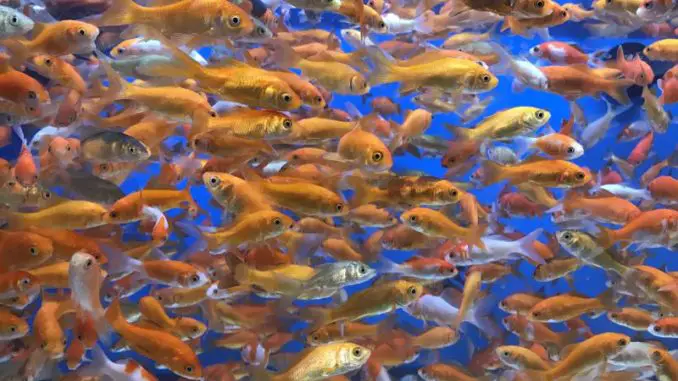
Feeder goldfish are goldfish sold as pets and as food for predatory fish.
The comet goldfish and the common goldfish are the most widespread feeder goldfish species. The two species look similar. Both fish come in various colors, including orange, red, white, black, yellow, and blueish grey.
With their unique physical features, feeder goldfish can add a whimsical aesthetic value to an aquarium.
TABLE OF CONTENTS
Feeder Goldfish Facts & Overview
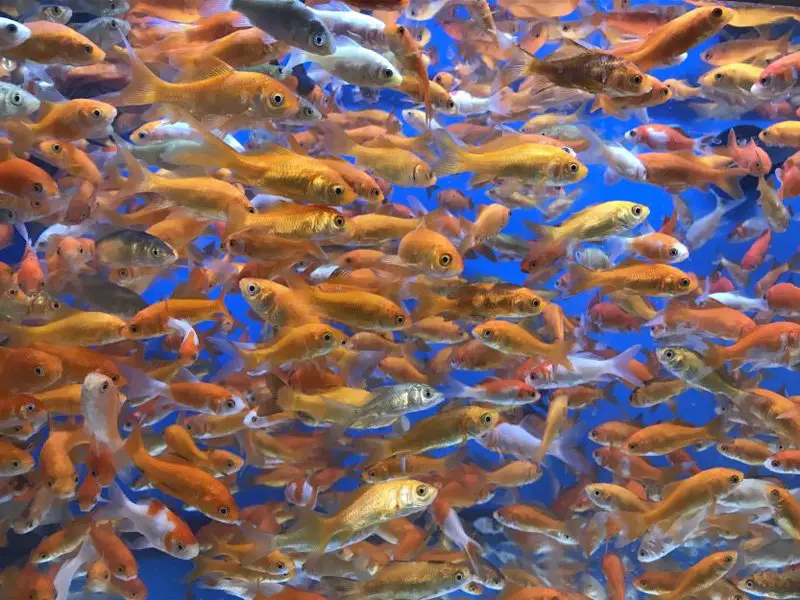
| Category | Rating |
| Care Level: | Moderate |
| Temperament: | Not aggressive |
| Color: | Various colors, patterns, and shapes |
| Lifespan: | ~12–15 years |
| Size: | ~12 inches |
| Diet: | Omnivore |
| Family: | Cyprinidae |
| Minimum Tank Size: | 20 gallons |
| Tank Setup: | Freshwater, plants, caves |
| Compatibility: | Most smaller freshwater fish |
Feeder goldfish are freshwater fish that live in ponds, lakes, and slow-moving vegetated streams. Aquarists keep feeder fish on farms as food for predatory fish, which is why they are called “feeder goldfish.”
Feeder goldfish are part of the Prussian carp ancestry from the genus Cyprinus and are a cousin of the koi. They are species in the family Cyprinidae of order Cypriniformes.
Feeder goldfish and the common goldfish are native to the Lower Yangtze River in Wuhan, China. The comet goldfish is not found in the wild. Comet goldfish are a result of crossbreeding and laboratory-induced mutations.
The average lifespan of feeder goldfish is 10–15 years. These fish can live up to 40 years under the right aquarium conditions. They are common fish and are available in aquarium stores and online pet stores. Feeder goldfish cost from $0.15 to about $40, depending on availability, size, and quantity.
Appearance and Behavior
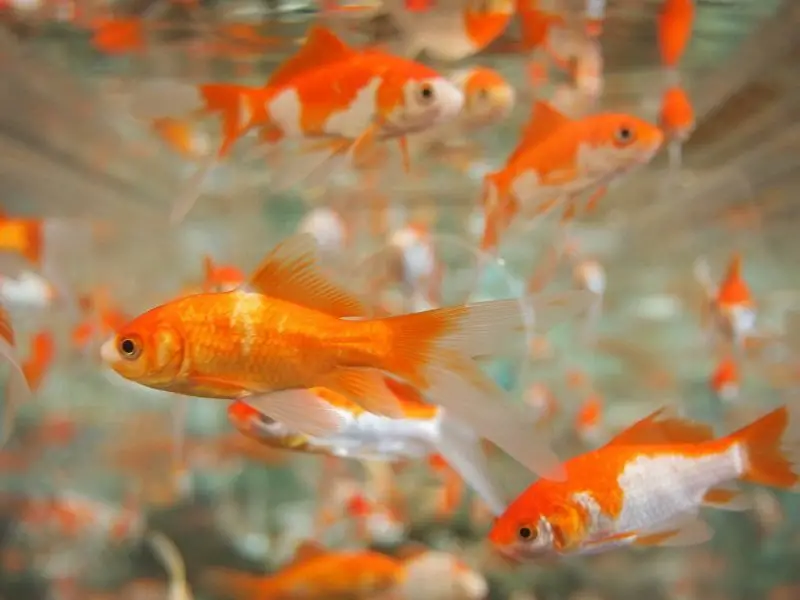
Feeder goldfish are available in various colors, including orange, red, white, black, yellow, and blueish grey. Juvenile fish have a dark grey, black, or brown hue, with golden patches on their head. Adults are orange with a gold-and-white appearance.
Feeder goldfish fins vary from long and flowing to short and pointed. They have a torpedo-shaped body which is prominent when the fish dart around the tank.
Males have flowing fins with thick, and long pectoral fins. They are also slim and appear smaller than the females. Both genders of feeder goldfish are colorful, but the males will show spots on their gills and pectoral fins during mating.
Feeder goldfish can grow up 12 inches long (30.48 cm) in an aquarium setting. Healthy fish can grow 15 inches (38.1 cm) long in their natural habitat. They weigh up to 2 pounds (0.9 kg)
Typical Behavior
Feeder goldfish are active and spend most of their time swimming throughout the tank. They will stop and rest on and around objects during the night. They will school and interact with other fish during the day. Some fish will swim to the bottom of the tank when bored.
Feeder goldfish are not aggressive or territorial, but they will nudge one another to establish dominance. Feeders will chase other fish and fin nip during meal times or breeding.
Feeder goldfish will huddle together in one tank area on top of plants or near heaters when stressed. They will also swim frantically and crash to the bottom of the tank or rub against plants and gravel. Sick feeder goldfish will rest at the bottom of the tank.
Chasing and nipping at other fish is common feeder goldfish behavior. Feeders will also swim in circles or figure eights, hide behind plants, and splash around when they feed well.
Feeder goldfish are curious about their surroundings. Always put a lid on feeder goldfish tanks as the fish are prone to jumping out of the aquarium.
Feeder Goldfish Care
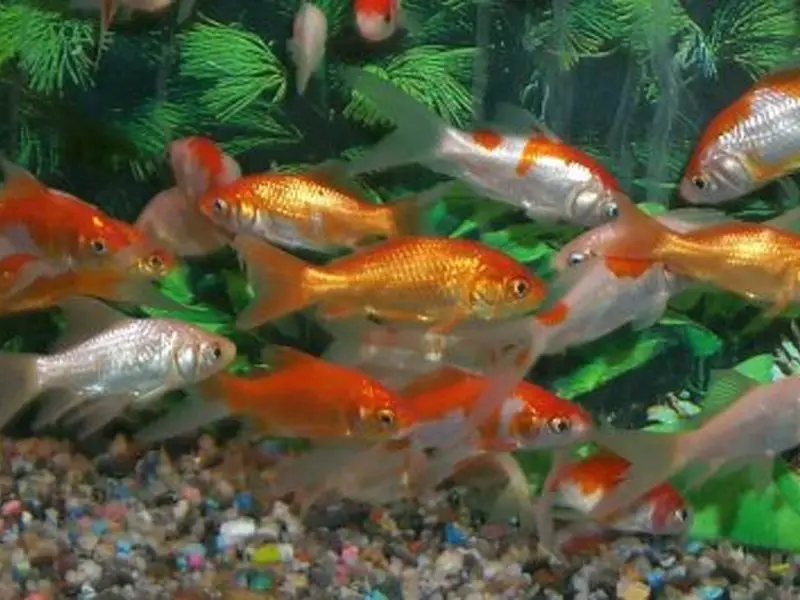
Feeder goldfish care is similar to other goldfish species care. They do best in a large tank with some vegetation and an open area for swimming. Keeping the fish in a bowl or small aquarium will cause the feeder goldfish stress. Ensure each feeder goldfish has 20 gallons of water to swim in.
Feeder goldfish care is easy as long as aquarists provide the right tank and supplies. They swim in slow-moving water with a muddy substrate in the wild. They will adjust to most aquarium conditions similar to the fish’s natural habitat.
Feeder goldfish feed on algae, plants, insects, worms, crustaceans, and mollusks in the wild. They can also eat dried flakes and food pellets in an aquarium setting—feed feeder goldfish two or three times a day to keep them healthy. Increase the portion size as the fish grow.
These fish are often exposed to bacterial infections in pet stores. Feeders are sold as food, so keeping the fish in hygienic conditions is not the pet store’s top priority. Keep feeder goldfish in a quarantine tank for two weeks before introducing the fish into a community tank.
Aeromonas and Pseudomonas, flukes, and other ectoparasites are bacterial infections that can infect the feeders’ skin and gills. Prevention is the best policy. Perform regular water changes to prevent these conditions.
Habitat and Tank Requirements
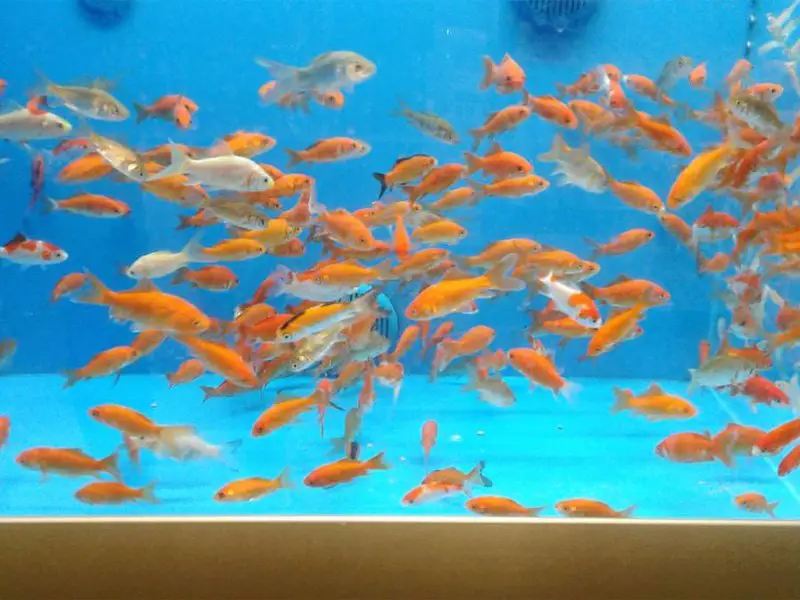
Feeder goldfish live in slow-moving waters with muddy bottoms and vegetation in the wild.
Water filters and heaters help recreate the fish’s natural water conditions. Use an under gravel filter or a box filter and an adjustable heater to maintain the temperatures. Adhere to the specific water parameters when recreating these conditions, or the feeder goldfish may die.
Tank Conditions
The desired water temperatures should range from 68º to 75º degrees Fahrenheit (20 to 24 degrees Celsius). The pH level should balance at 7.0 to 8.4. Feeder goldfish live in freshwater, so the water needs to be clean and free of harmful pollutants.
Feeder goldfish need a tank that can hold at least 20 gallons for one fish. Install an adjustable filtration system to keep the water clean, and add a heater to maintain the appropriate temperatures.
Medium-sized gravel is the best substrate for a feeder goldfish tank. Make sure the stones are smooth and free of sharp edges or pieces that can injure the fish. Decorating the tank with plastic or live plants, rocks, and logs is a safe choice. Keep the center of the aquarium clear.
Tank Mates
Feeder goldfish are peaceful fish. Keeping them with other peaceful fish species is ideal. They may not fare well in tanks with smaller fish as feeders grow quickly.
The best tank mates for feeder goldfish are other freshwater fish such as hillstream loach, hoplo catfish, and rice fish. These fish thrive in similar water conditions. They also have identical temperature requirements and are compatible with many tank decorations.
Cherry shrimp, ghost shrimp, and dwarf frogs are some good non-fish tank mates for feeder goldfish.
Avoid keeping feeder goldfish with snails. The feeder goldfish will eat small snails that can fit in their mouths and nip on the shells of adult snails. Feeder goldfish can also eat frog eggs and young tadpoles.
Diseases
Polycystic kidney disease, neurofibromas or warts, and parasitic infestations are common feeder goldfish diseases. Polycystic kidney disease is a condition in which cysts form in the kidneys of the fish, making it appear lumpy. This disease is terminal and is diagnosable through ultrasound.
Warts or neurofibromas are growths that appear on the skin and fins of feeder goldfish. Warts or neurofibroma are genetic conditions that are incurable.
Parasites are common amongst feeder goldfish. Signs include lethargy, missing scales, and red spots. For effective treatment, first, consult an aquatic veterinarian as there is no one cure fits all. Quarantining new fish will prevent parasite infestations.
Diet and Feeding
Wild feeder goldfish are omnivores. Omnivores eat plants and meat. Feeder goldfish need a balanced diet of plants and protein to thrive.
Feed feeder goldfish algae, zucchini, and romaine lettuce. These vegetables are readily available and great for feeder goldfish. Brine shrimp, bloodworms, and black worms are great live or frozen food to feed feeder goldfish.
Specialized granules and goldfish flakes are ideal prepared food for feeder goldfish. Veggie mix and daphnia will also provide the fish with much-needed nutrients. Feed feeder goldfish twice or thrice daily and increase their potions as they grow.
Breeding
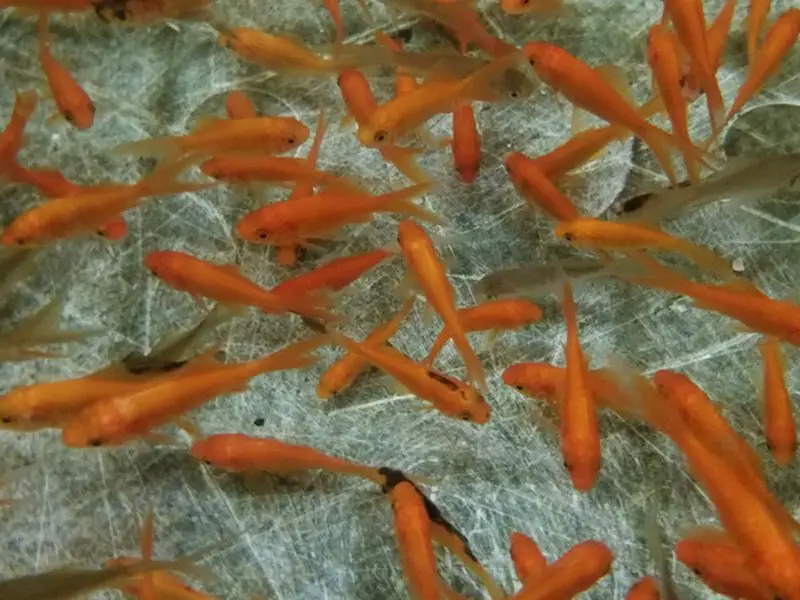
Breeding feeder goldfish in aquarium tanks is difficult. While most aquarists breed them for use as live food, doing so in a tank is challenging. Invest in a separate breeding tank. A 10–30 gallon tank is ideal. The fish will require a gradual decrease in temperature for about one month to 58 degrees Fahrenheit (14 degrees Celsius) to induce breeding.
Give the fish light for no more than eight hours a day and feed them high-quality foods for one month. Live foods, vegetables, and high protein foods are essential but avoid overfeeding the fish.
Increase the tank temperature to 70 degrees Fahrenheit (21 degrees Celsius) after a month. Increase the light to 12 hours a day to complete the spawning induction cycle.
When the feeder goldfish are ready to spawn, the males will chase the females around their tank. The females will release eggs on plants or the tank walls, while the males will release milt to fertilize the eggs. Separate the parents from the eggs once spawning is complete, as the parent fish will eat the eggs.
The eggs will hatch within 24 hours. The fry will start swimming in two days.
Feed the fry baby brine shrimp, daphnia, or micro worms to ensure they can survive. Keep the young feeder goldfish in a separate tank to increase their survival rate.
Should You Get a Feeder Goldfish for Your Aquarium?
Feeder goldfish are brightly colored and hardy, making them an interesting addition to any tank. Remember to quarantine new fish before adding them into a community tank, as feeder goldfish often carry parasites and other contagious diseases.
They are great visual additions to the tank. These fish are inexpensive, easy to care for, and make great pets.
Feeder goldfish are challenging to breed in captivity, but their unique physical features are worth the effort.

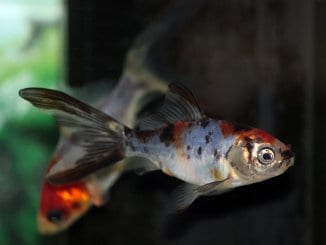
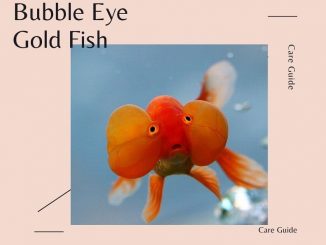

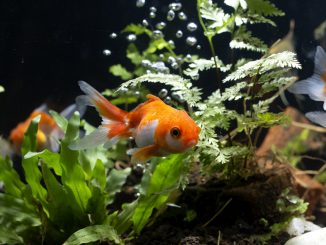
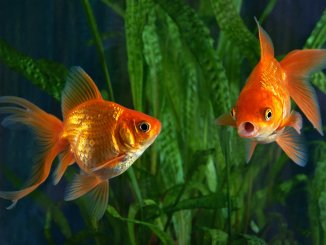
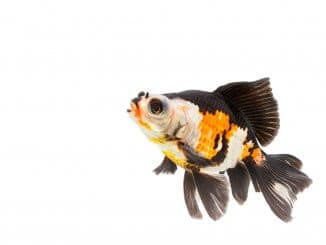
Be the first to comment